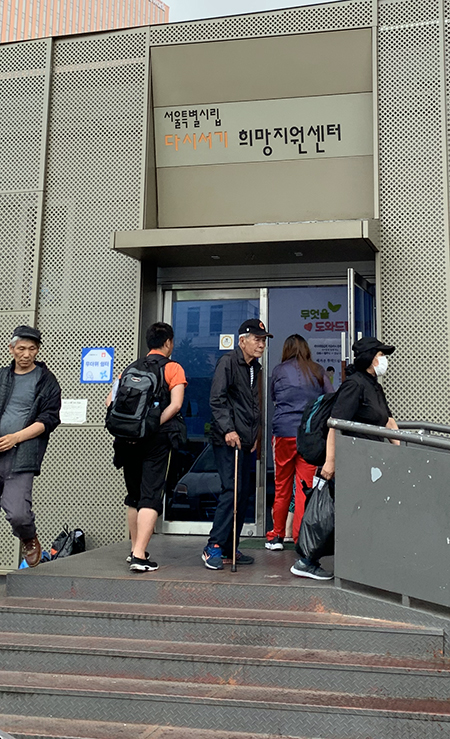Ever since the pandemic started to spread, all volunteer activities have been suspended indefinitely. However, with the social distancing guidelines being slowly relaxed, I was finally able to take part in an activity to help my community. One particular activity that I was interested in joining was a program to make and distribute kimchi to low-income senior citizens who live alone. According to the Organization for Economic Cooperation and Development (OECD), “about 50 percent of all aging Koreans live in relative poverty. Poverty and social isolation have been repeatedly identified as serious problems among older Koreans.”
However, with the recent pandemic, this problem has been further exacerbated as free meal centers and senior daycare centers that regularly benefited the Elderly have decided to close down. Even though the korean government had tried to aid them by means of releasing disaster relief cards, it had failed to address every single senior in need for help.
One way to help these senior citizens who live alone and can’t afford to buy some everyday necessities is by providing weekly kimchi packages to them through the Hope Center in the Jongno district of Seoul. All that is required of participants is 20,000 won to help purchase the ingredients and about two hours of their time. I went to the center by myself on a Sunday afternoon and was pleasantly surprised to see about 20 volunteers of all ages ready to make kimchi.

As we all washed our hands and put on sanitary masks, I was curious to see what the process would be like. When I left my home earlier that day, I had told my mother that I was going to a volunteer activity to make kimchi for senior citizens and she looked at me strange as I had never helped her out before in making kimchi. One would assume that making kimchi is a complicated process as I have seen my relatives take hours to prepare several containers of kimchi and the preparation area always looks like a bomb went off with cabbage, red chili powder, and assorted seasoning all over the place. I had read before that there are over 200 different kinds of kimchi but the center on that day was preparing the most traditional kind called Baechu Kimchi.

I was told that the cabbage had already been soaked in salty brine water, so I started by making the spicy red paste called “gochujang” that is smothered onto the cabbage. The paste consists of red pepper flakes, garlic, ginger, onion, fermented salted shrimp and fish sauce all mixed together. My job with some other inexperienced student volunteers was to mix the cabbage and the spicy paste together so that every piece and crevice of cabbage is covered with the paste. We sat down and began to lift up the cabbages, put them in baskets, and meticulously applied gochujang to it. Due to the substantial amount of kimchi that we had to make, this process took about 1-2 hours. It was tiring as the cabbages were heavier than they looked . After a thorough mixing, everything is put into a large glass jar to start the critical fermentation process. It is a lacto-fermentation process that breaks down carbohydrates into gas which makes food preserved longer and even makes it healthier. For this process, other experienced adult volunteers took responsibility since it was the most vital part of kimchi making.
I learned of the many health benefits of kimchi while I was there since I asked a supervisor why they made kimchi for the senior citizens. Kimchi has lots of nutrients such as fiber, vitamin C, vitamin K, and iron. She also said that kimchi is good for the health of the heart as it can decrease cholesterol levels and reduce inflammation.
At the end of the kimchi making session, I had expected to meet the senior citizens who would receive the kimchi, but it was explained to me that the kimchi is delivered to their homes as it is heavy and would be a burden for the senior citizens to carry them home. It was a new approach I took to help the poor and it left me satisfied that the first outside activity, ever since coronavirus hit, was an action that could possibly bring happiness to others.

Janghoon Lee
Junior (Grade 11)
Korea International School

